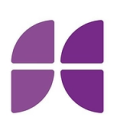In 2016, Sorbonne professor Carlos Moreno coined the term “15-minute City,” and urban design enthusiasts everywhere rejoiced. Popularized by Mayor Anne Hidalgo in her crusade for a more walkable Paris, the new urbanist idea of a city where everything a person needed was reachable in a 15-minute commute became the global rallying cry for anti-automobile advocates.
The sustainable, pedestrian-focused concept transformed from an urban fad to a serious planning strategy after the pandemic. A white paper published by the International Working Group states that Covid-19 has shifted the nucleus of activity in a person’s day to their home. Locality defined the new community hub for people, and by extension, their offices — the last piece of the 15-minute puzzle, according to the IWG.
In a world of changed priorities, tech companies that adapted to the spirit of an untethered workforce have found success in employee retention.
Hybrid workplaces are now a welcomed model for tech employees, and many companies have taken note. With flexibility topping the list of perks and benefits for many applicants, 38 percent of businesses interviewed by the IWG are downsizing physical offices, with 42 percent moving to or considering a shared office space.
The form and function of hybrid workplaces may vary between companies, but a degree of flexibility is the common thread. “Employees come into our office two days per week on the same days as their direct teams, with almost all employees working remotely on Mondays and Fridays,” said Heidi Sayler, Travelers Haven’s manager of HR and talent acquisition.
Though some tech workers now reject five days a week in the office, many accept a few days of in-person work to bond with colleagues and collaborate with teams. Not everyone can have a 15-minute commute to work, but simply having some days with no commute goes a long way towards work life balance and employee engagement.
“Employees appreciate the time they have each week to work at home, allowing them to avoid the commute and dig deep into their individual projects with less distraction,” observed Sayler.
To see snapshots of what a new hybrid workplace could be, Built In Colorado sat down with Funding Circle and Travelers Haven to see how they’ve captured the dynamic spirit of a 15-Minute City.
Funding Circle is a small business lending company that sought to build a platform for accessible loans in the space. With over $19 billion lent globally to date across 130 thousand companies, Funding Circle has become an important financial source for small businesses. As a company that deals with international businesses, it has also adapted to current workplace trends for its employees. “Our hybrid model promotes employee flexibility between remote and in-office working and maximizes the benefits of both work environments,” said Shelby Lyons, people partner.
Briefly describe your company’s hybrid model. For example, how often are employees expected to come into the office?
Funding Circle employees come into the office 40 percent of the time, which is equivalent to two work days per week.
What makes your hybrid work model particularly unique or successful?
One way we do this is through an all-hands in-office day on Tuesday to maximize collaboration as much as possible, and we allow flexibility for teams to designate how they want to come in the remaining day. We also recognize that people appreciate the options in extended remote working, so we have created a work from anywhere policy that allows employees to work from another US state or approved country for up to 30 business days. Employees appreciate this benefit, especially when visiting friends and family who reside in another location.
Another success we have had is to move new hire start days to begin on Tuesdays in person rather than start them remotely on Mondays. The benefit of this is that new hires meet their team in person on their first day, fostering a better sense of connection right from the start.
Employees appreciate this benefit, especially when visiting friends and family who reside in another location.”
How has your hybrid work model evolved over time?
Though our policy does not mandate specific days employees should come into the office, most teams have decided that it makes sense to come in on Tuesday and Wednesday for Denver, and Tuesday and Thursday for SF, when there are the most in-person connection opportunities with other teammates and stakeholders in the office. For example, our sales team values two successive days in the office to maximize their learnings from time spent together on the sales floor.

Travelers Haven is a housing firm that finds solutions for America’s new nomadic workforce. As a provider of on-demand short-term housing, the company’s primary client base consists of traveling professionals with flexible workplace options. Travelers Haven’s business model has undoubtedly adapted to the remote work revolution now sweeping the country, and its internal operation is no exception. “We are enjoying this balance of in-person collaboration and at-home focus time through the hybrid schedule,” said Heidi Sayler, manager of HR and talent acquisition.
Briefly describe your company’s hybrid model. For example, how often are employees expected to come into the office?
Each team is assigned their consistent two days in office and we’ve worked out a schedule where the teams that work closely with one another overlap at least one day each week.
When employees are in the office, they sit next to associates on different teams that they work with often. This allows employees the opportunity to shadow one another, in order to better understand how they can improve workflows and see the full picture of our business processes. This teamwork creates a feeling of camaraderie and also helps grow our employees’ skill sets and understanding.
What makes your hybrid work model particularly unique or successful?
Travelers Haven has found a way to allow teams to overlap in person with colleagues they usually interact with throughout a typical work week. We encourage collaboration such as gathering all of the stakeholders in one room to get a project across the finish line or sitting alongside a manager to learn new skills. We have a social hour every day at 4 pm where employees can play games, chat about non-work topics and get to know one another better. We also created an Employee Engagement Council that meets bi-weekly to brainstorm in-person and remote activities that can bring employees together.
Just this month alone we have done a very competitive step challenge with the winning team each week choosing a charity for Travelers Haven to donate to; a spirit week where employees posted photos of their favorite fall recipes, flannel, and costumes; a company hike on a gorgeous fall day; a food drive for a local non-profit and a no-shave November competition. Utilizing technology such as MS Teams for updates and virtual meetings keeps everyone in the know. Connecting employees, allowing them to give back and having a little friendly competition along the way has made a huge difference for our culture.
We are happy about the balance we’ve achieved with our current model.”
How has your hybrid work model evolved over time?
Over the past one and a half years, we have adjusted our hybrid model to best fit our business needs. In spring 2021, when we returned to the office after working remotely for over a year due to Covid-19, we did so on a hybrid schedule to allow for plenty of social distancing. Since then, we’ve gone back to being fully remote when Covid rates were higher, and then returned to the office when rates decreased to a safe level. Through all of the changes, we have seen that employees can successfully work remotely and accomplish their tasks. There is no doubt about how the flexibility of working from home part-time can provide employees with a healthy work-life balance.
However, we’ve also seen that there is no substitute for the teamwork that can happen in person. Employees can much more easily ask a question of someone on another team, chat and get to know them a bit, walk a coworker through their process flow to collaborate on enhancements and onboard new employees through shadowing multiple teammates. We are happy about the balance we’ve achieved with our current model, and look forward to using technology to continue to find better ways to work, align and be together.









